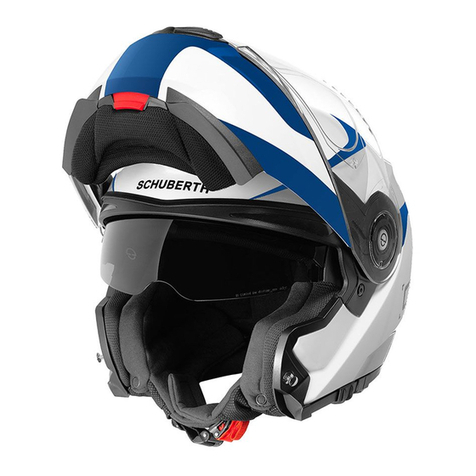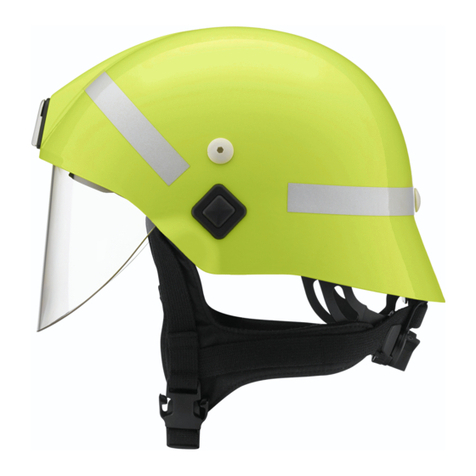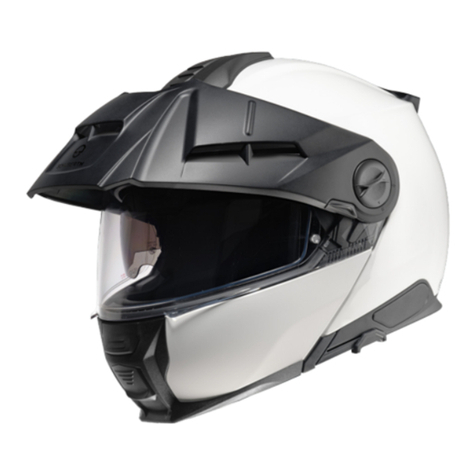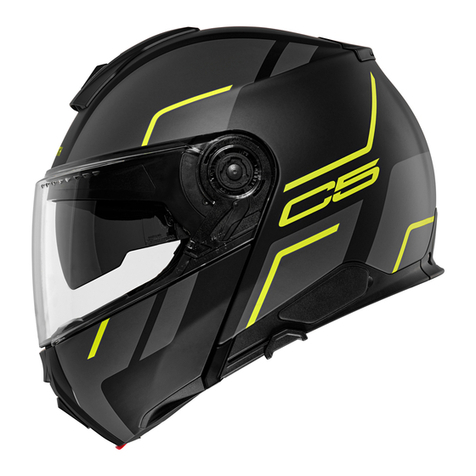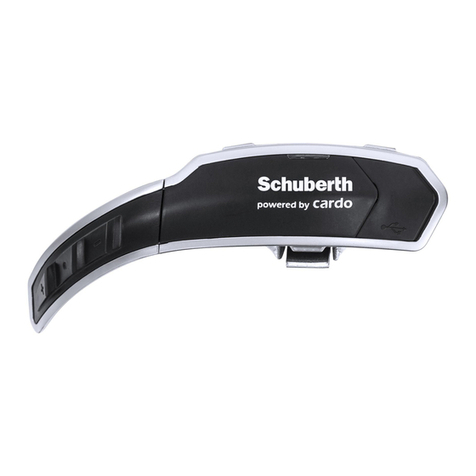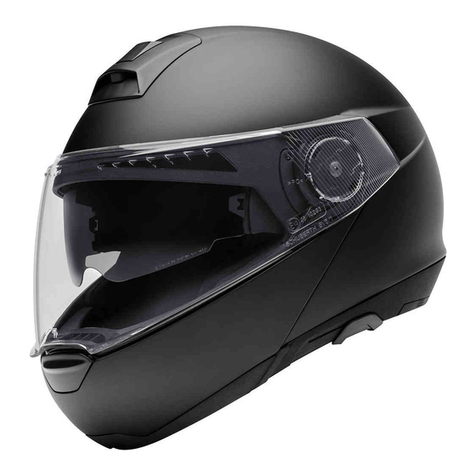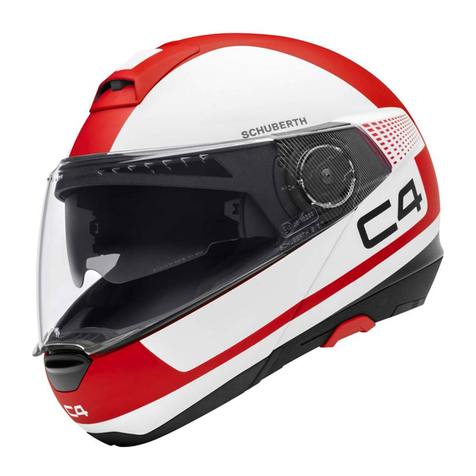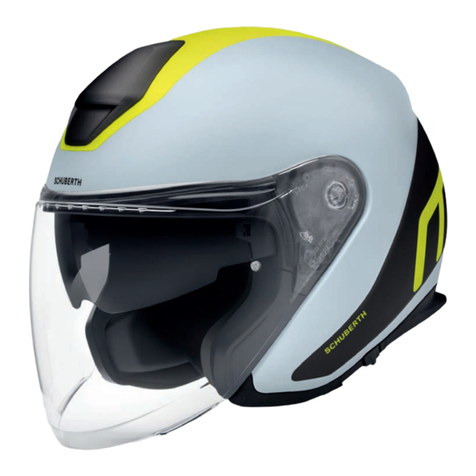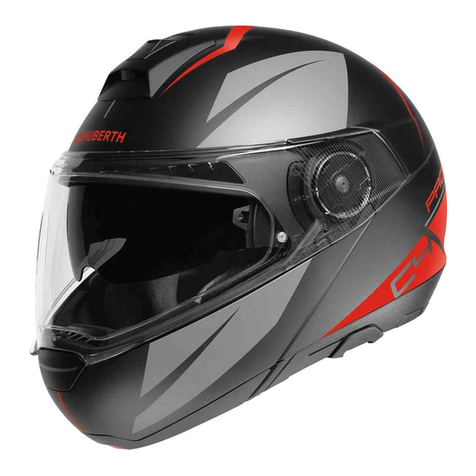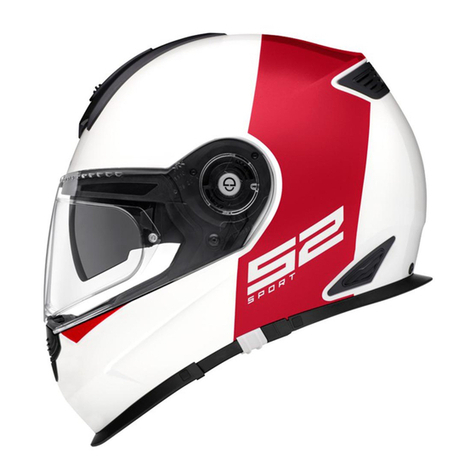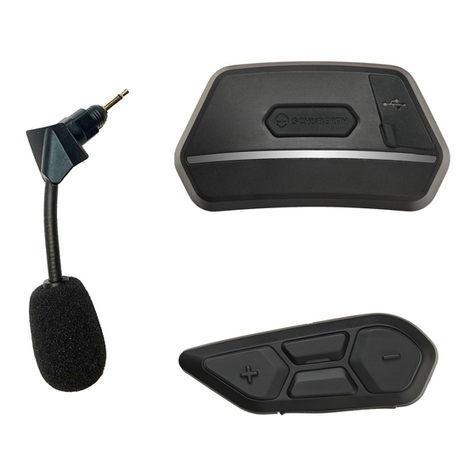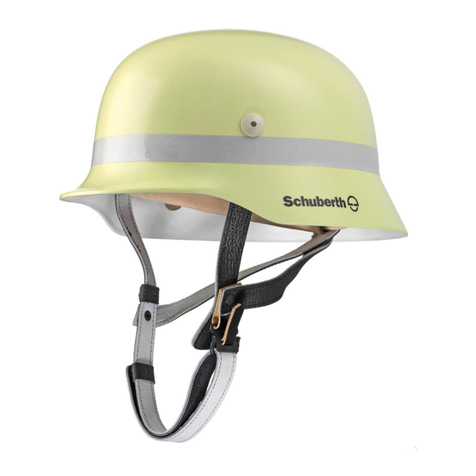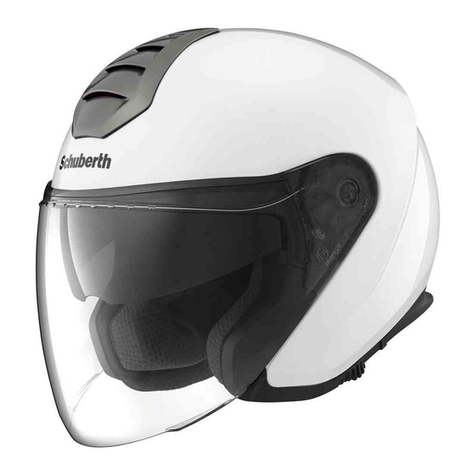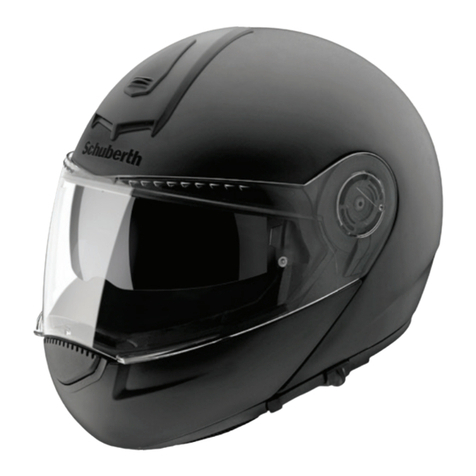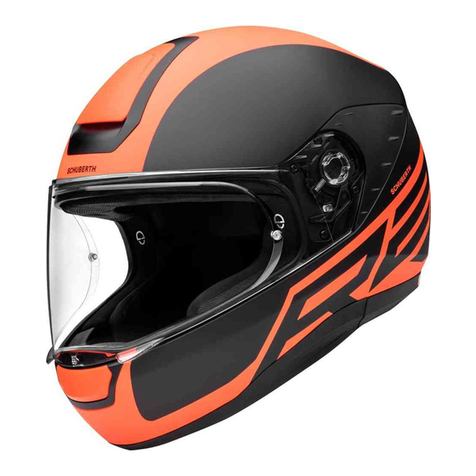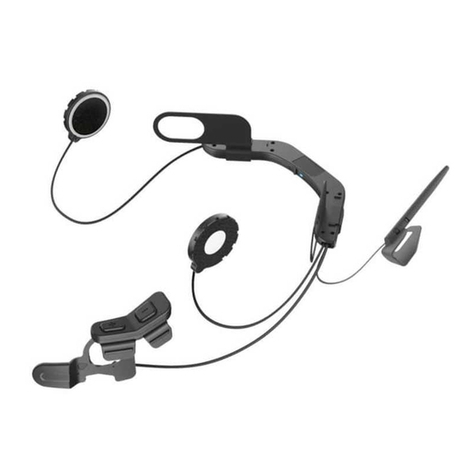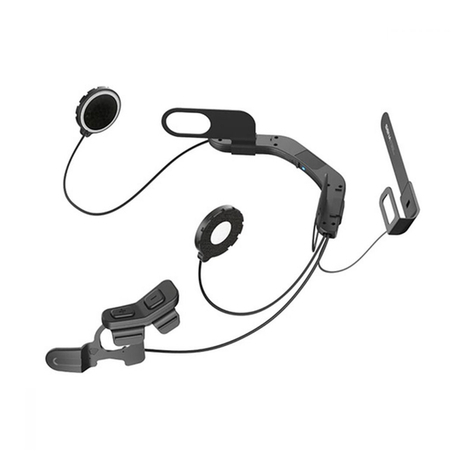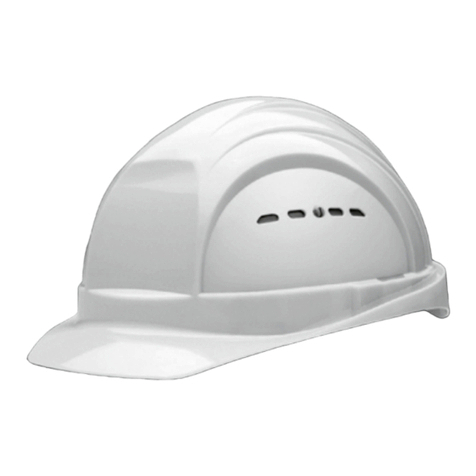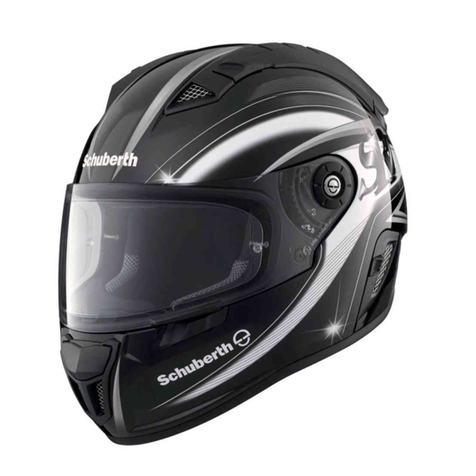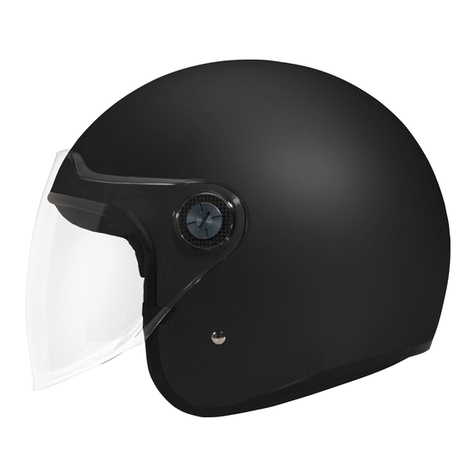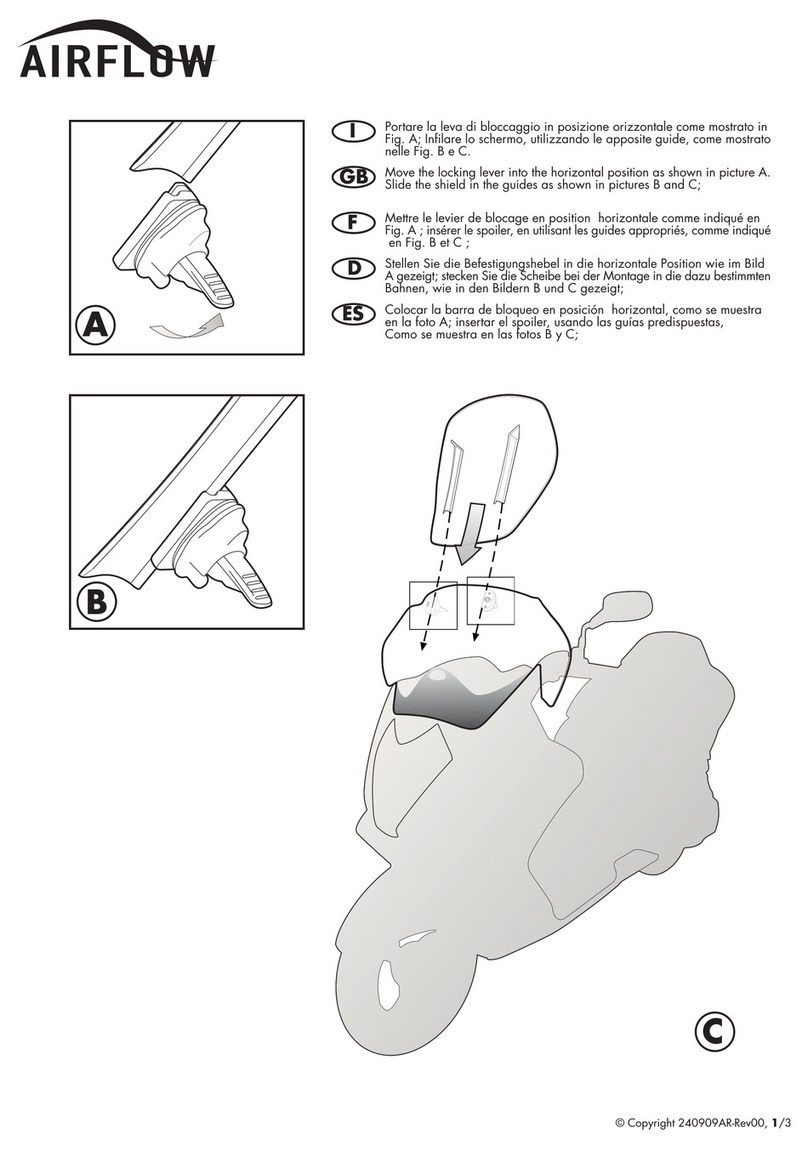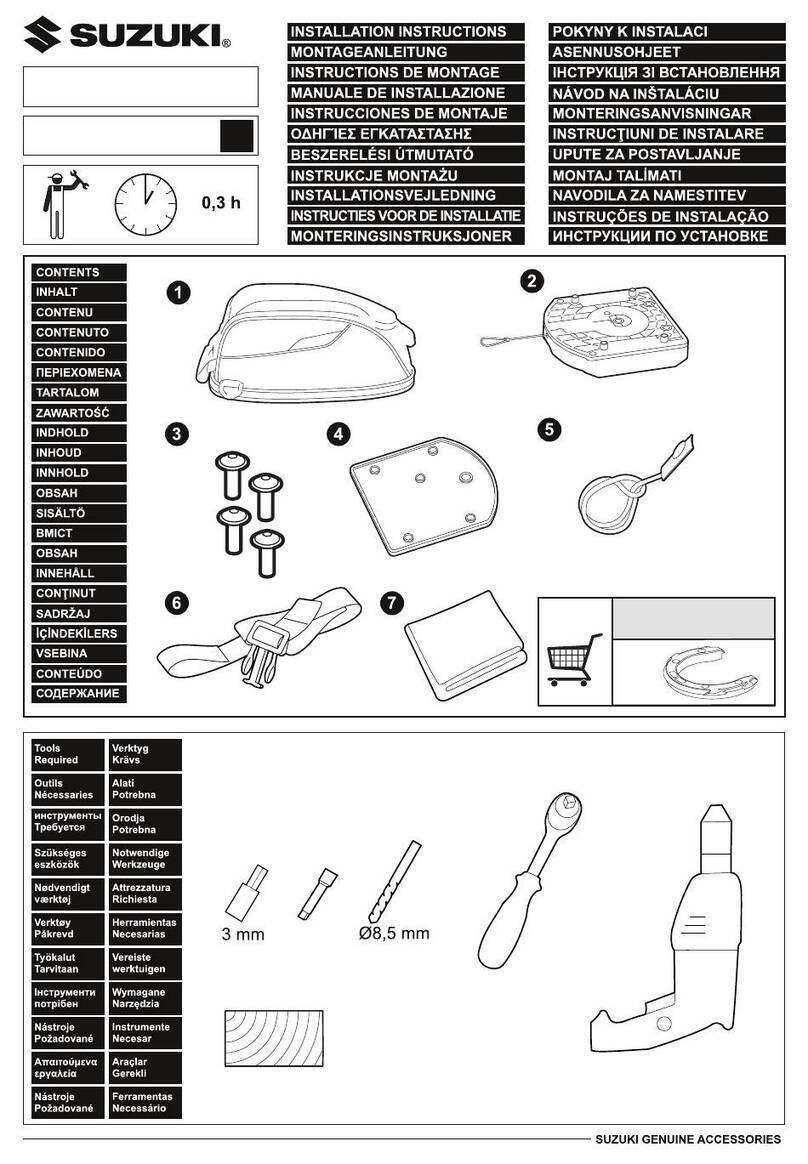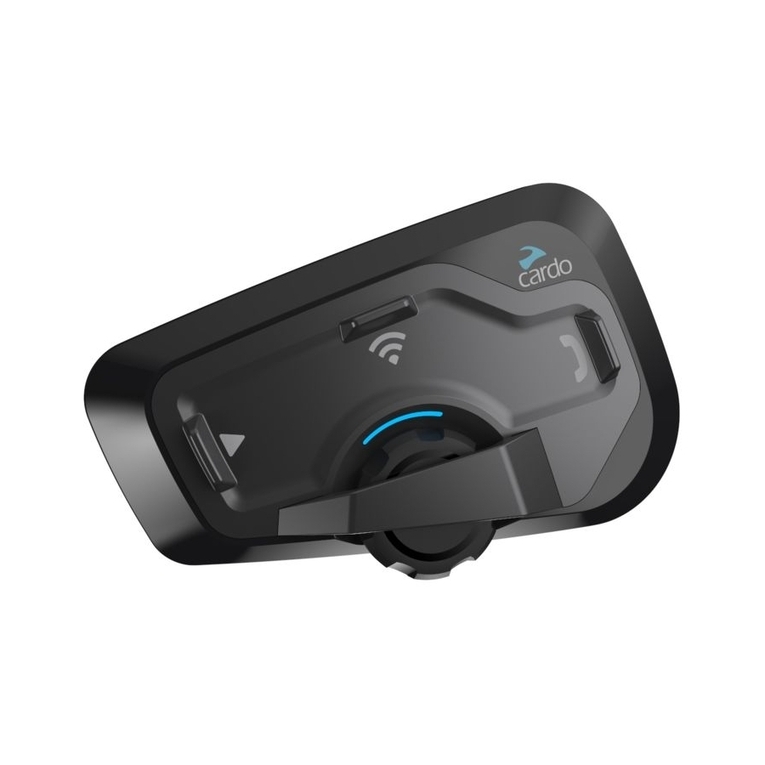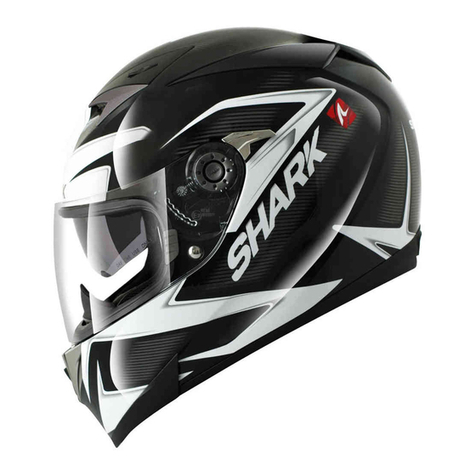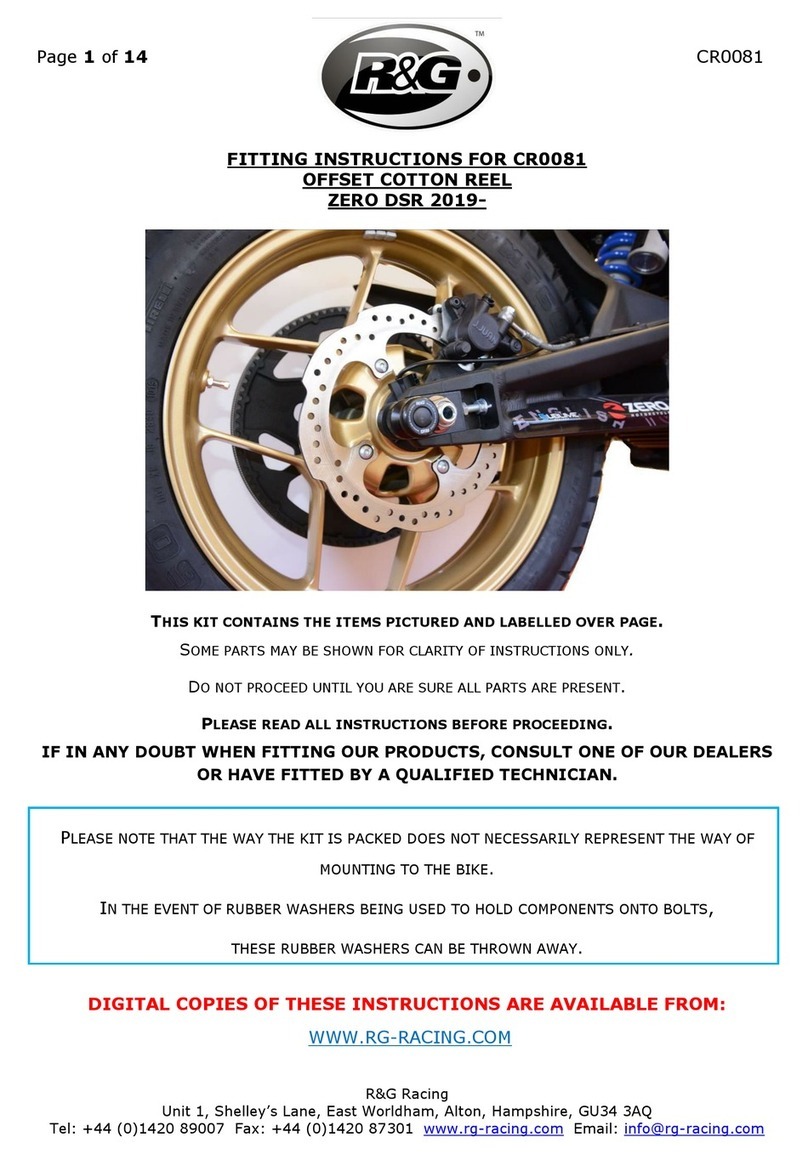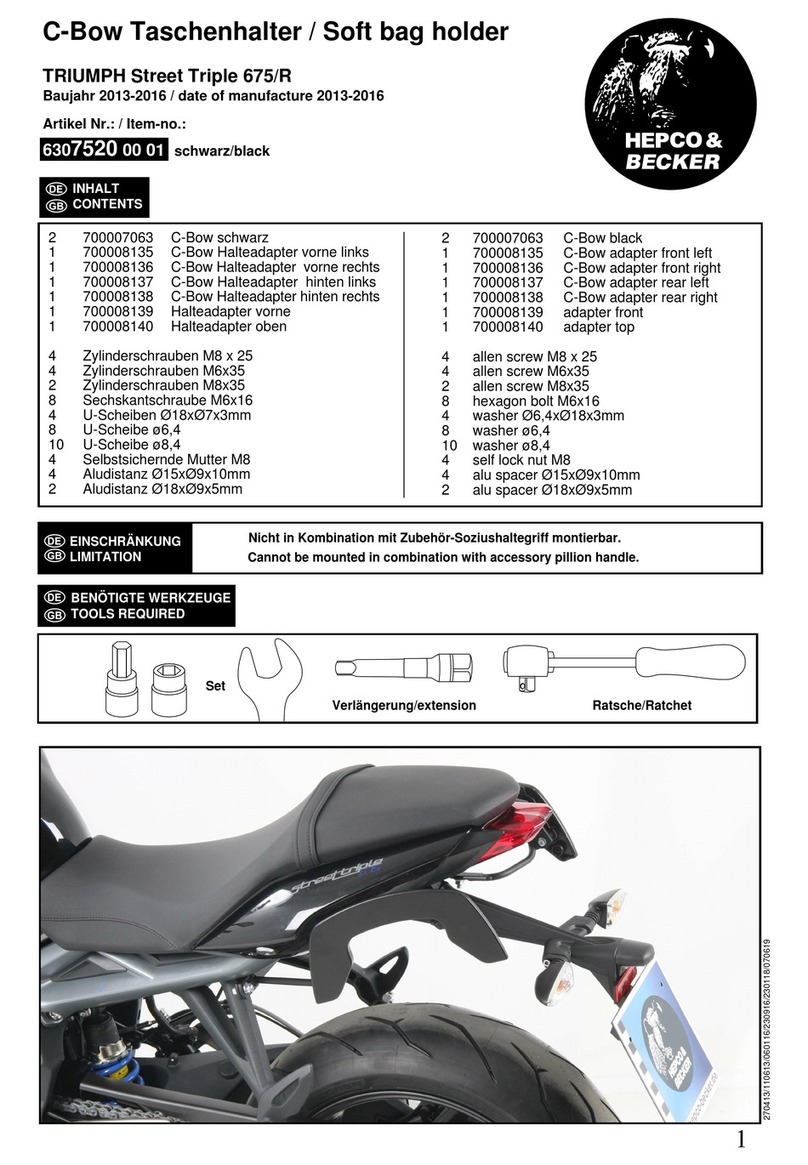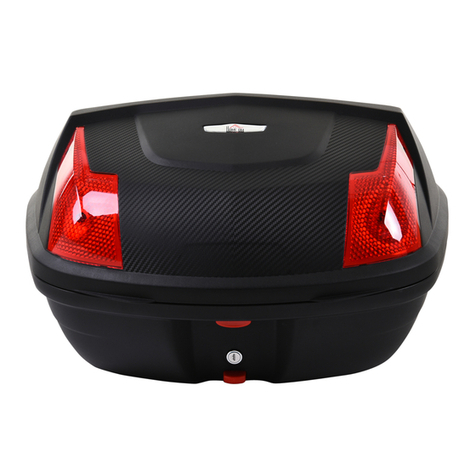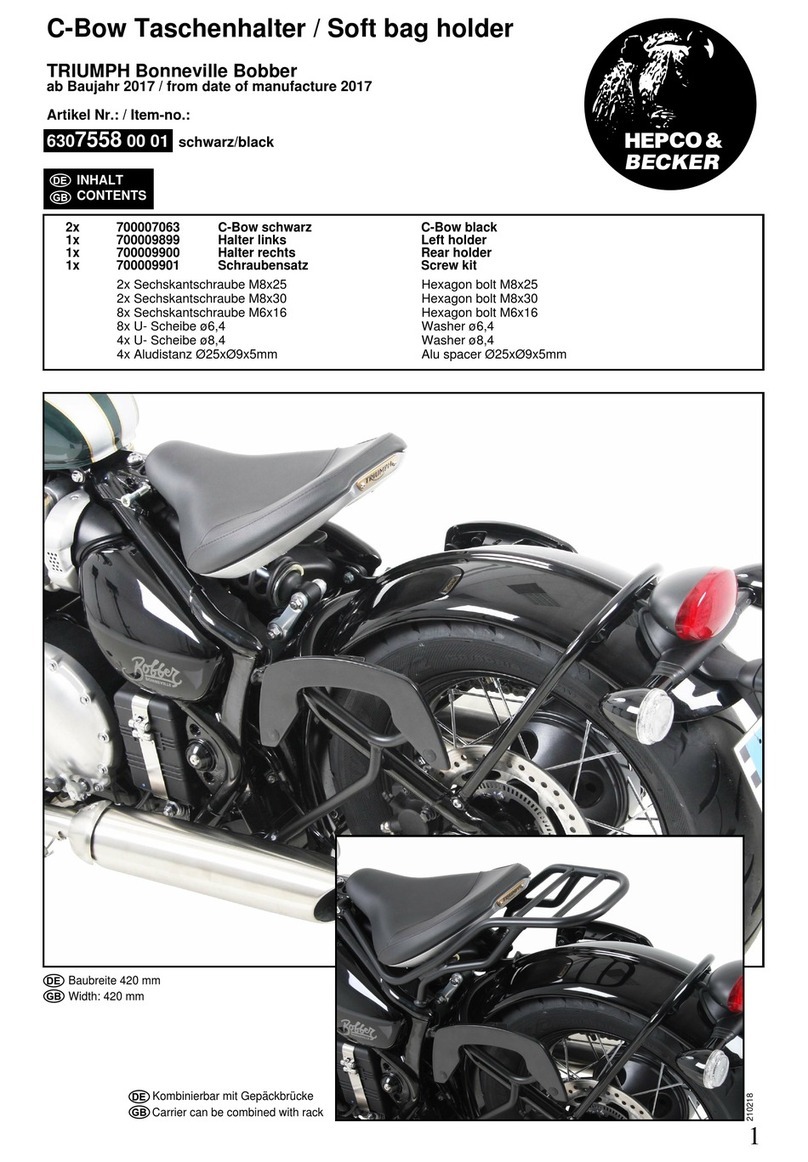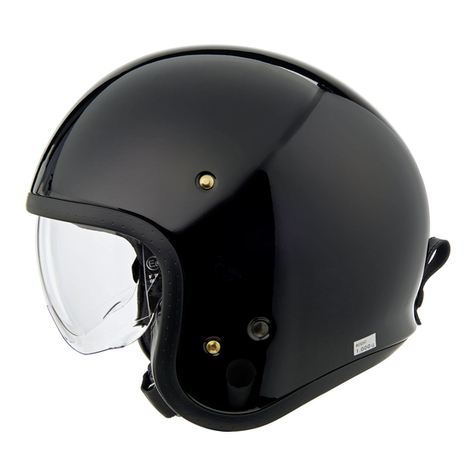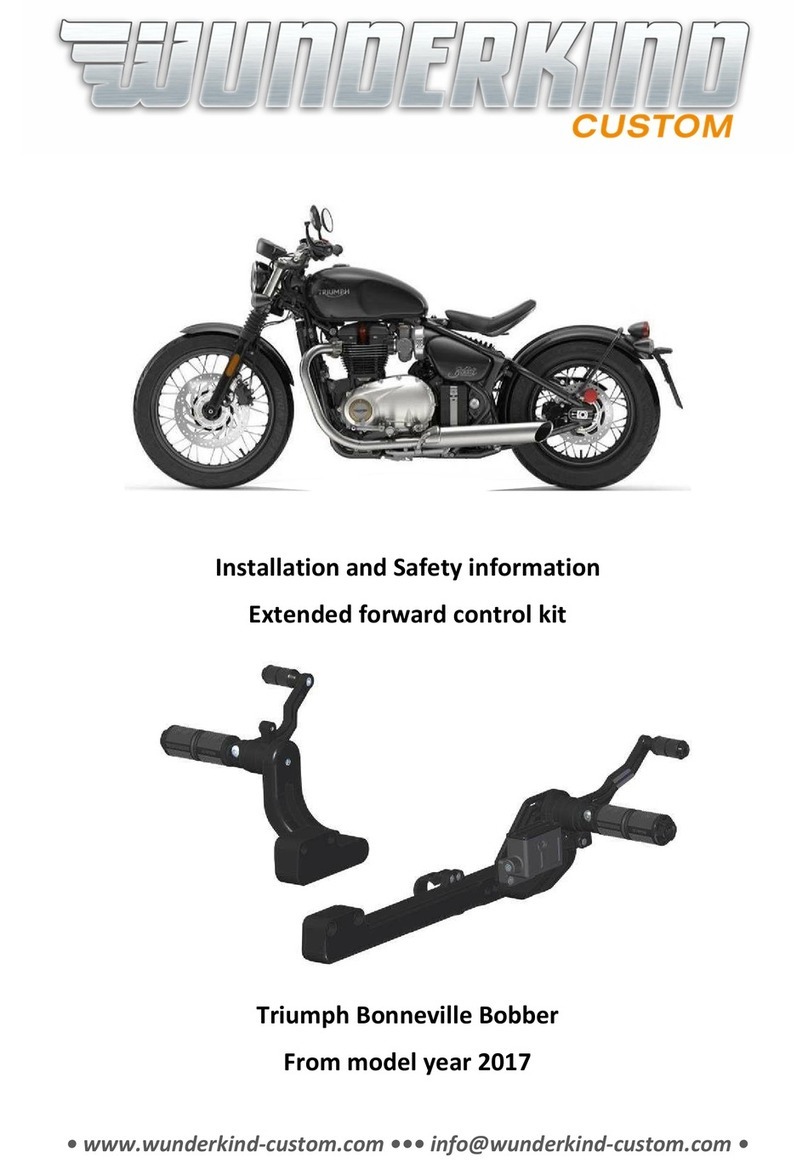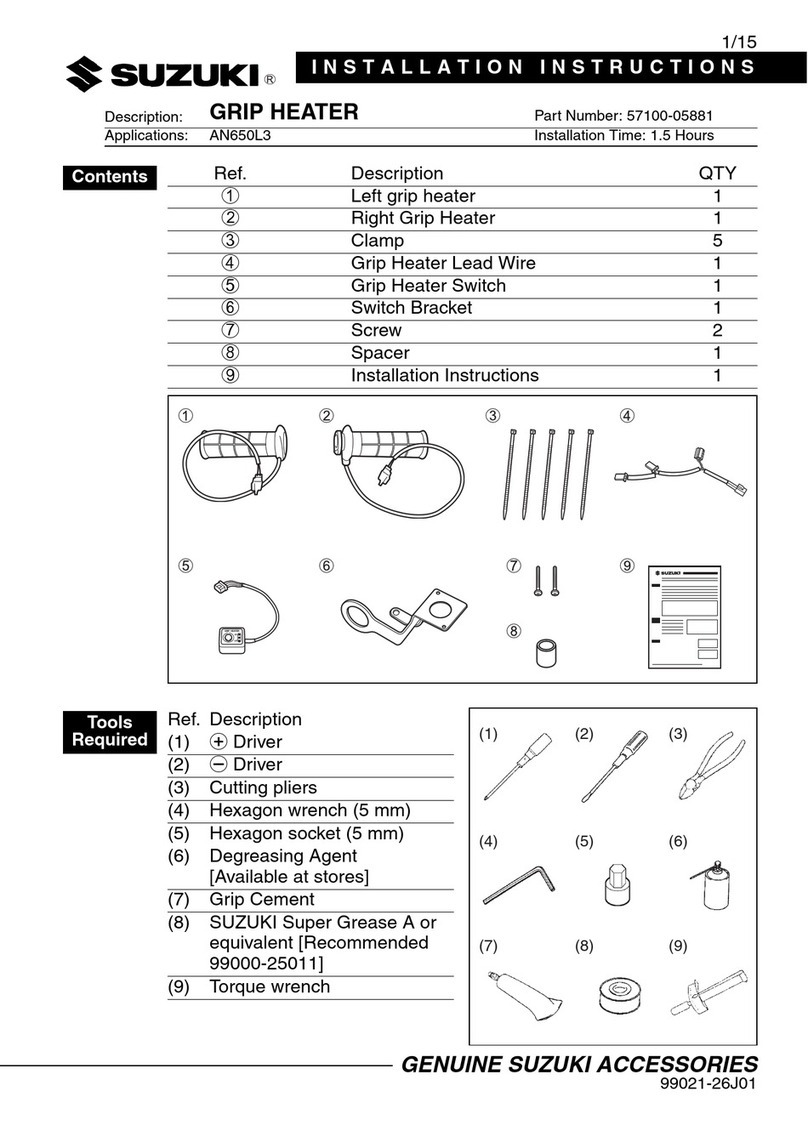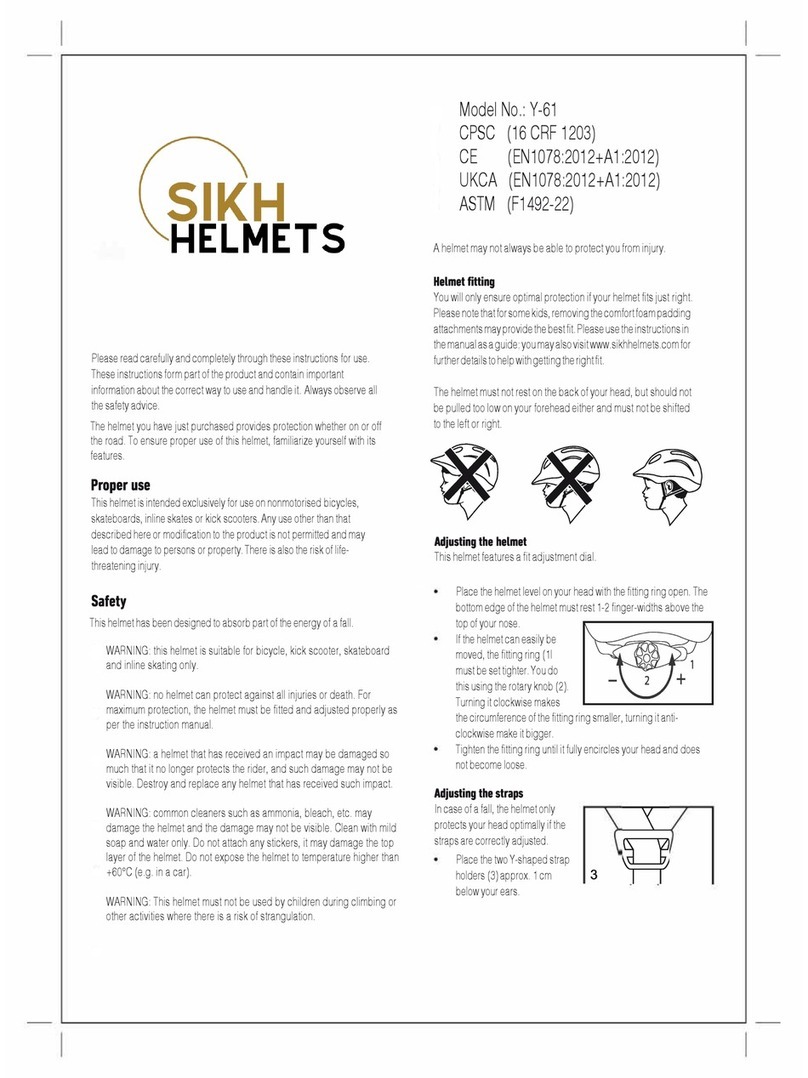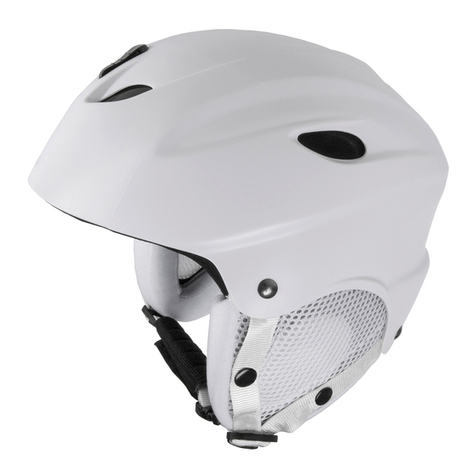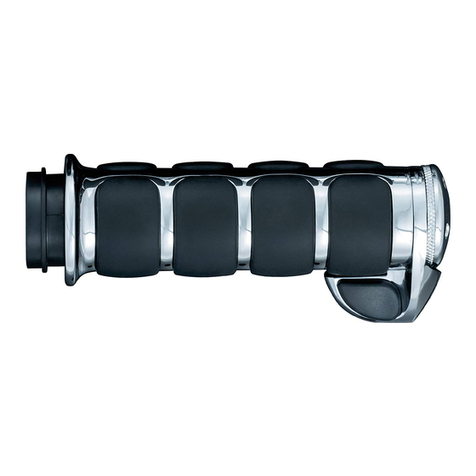
c. reAd firsT
Warning:
Always check your helmet before every ride!
1. Check the faceshield and sun visor for damage.
2. Check the correct function of the shield and visor mechanics.
3. Check for cracks in the helmet. Strong acid (e.g. battery acid)
can damage the shield bases. If you find cracks or damage,
stop using the helmet immediately.
4. Check helmet for deterioration. If you find deterioration in any
part of a component, either replace that component or get a
new helmet. If these parts come loose and/or fall off while you
are riding, your vision may be blocked, which could cause an
accident resulting in serious personal injury or death.
5. Check the security of the retention system (see section G.3.).
For checking instructions and procedure see also section G
(before every journey) of this manual.
Warning:
Keep your helmet faceshield and sun visor in well
maintained condition!
If your faceshield or visors become too scratched or uncleanable,
replace them with new ones. Impaired visibility may cause
accidents. Clean your faceshield and visors only with mild soap
diluted in tap water. Rinse well with clean tap water, and dry
with a soft cloth. Never use benzene, gasoline, glass cleaner
or any other solvents. Do not attach stickers or adhesive tape
to the faceshield or visors, as this will weaken the hard coating,
damaging the faceshield or visors. Do not drive with a damaged
or scuffed faceshield or visor. Impaired vision can cause an
accident resulting in serious personal injury or death.
Warning:
Never use the tinted sun visor at night, in poor visibility
conditions or in tunnels!
The tinted visor reduces light transmission and should never be
used in situations where vision is impaired (i.e. at night, in poor
visibility conditions or in tunnels).
Warning:
Do not repaint the helmet!
Repainting of your helmet is not recommended. Paint and thinner
can damage the helmet and reduce its ability to provide head
protection in an accident.
Warning:
Replace the helmet after no more than five years!
The useful life of the helmet depends on its use and care. We
recommend that this helmet has to be replaced after no more
than five years from its date of purchase.
Caution:
To avoid liner damage, do not hang the helmet on the mirror
or the handlebar.
Caution:
Do not carry the helmet on the motorcycle’s helmet storage lock
while riding in order to avoid exhaust pipe burns, tire abrasion,
and damage to the helmet.
Caution:
Keep the helmet outside the reach of pets to avoid the helmet
being damaged by chewing, scratching or other mistreatment.
Caution:
Do not expose the helmet to solvents including gasoline or any
fumes thereof in order to avoid damage to shields, shell, plastic
components and interior.
